Dodge Charger
Dodge Charger History
1966-1974

The Dodge Charger was a response to the fastback fad started by the Mustang and the Barracuda, but on a much larger scale. Based on the midsize Dodge Coronet model, the Charger was launched in 1966 and quickly became a sales hit with its dramatic fuselage styling of 1968. From the beginning, it packed serious muscle, from the 318 V8 to the all-mighty 426 Hemi. Finally, the MOPAR street crowd had some serious midsize muscle to bring to the party.
First Generation Dodge Charger (1966-1967)
The first-generation Dodge Charger was a shock to the system as far as high-powered fastbacks were concerned. While the Ford Mustang and Plymouth Barracuda were the first on the American fastback frontier, Dodge brought some furious race-bred engine options to the table right out of the gate, along with some signature MOPAR interior flourishes and style. By the time the Dodge Charger moved on to its second generation, it was already a name recognized on the drag strip and in households across America.
1966 Dodge Charger
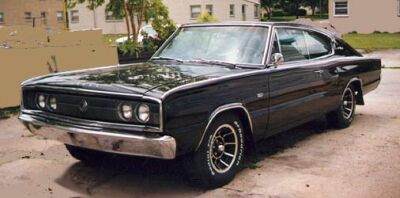
The Dodge Charger suffered from a bit of an identity crisis in its first couple of years. While the Charger utilized the chassis and running gear from the midsize Coronet platform, it used a unique, an larger, body, increasing the wheelbase and width to 117 inches and 75.3 inches respectively. The additional size was meant to create a roomier experience inside the cabin while also increasing cargo storage; that’s a pretty strange consideration for a muscle car. But, the first-gen Dodge Charger wasn’t necessarily a dedicated muscle car in the beginning. In fact, one of its main selling points was its storage capacity.
Of course, the Charger’s standout exterior styling feature was its fastback roofline with sweeping C pillars. Other exterior features included hidden headlamps and full-length taillamps. The interior was state of the art with four bucket seats, available consoles in front and back, and full gauges. The rear bucket seats could even fold down to create a cargo area seven feet long. Under the hood, the Charger proved that it wasn’t playing around. It ditched all of the inline-6 engine options from the Coronet. Standard was the 318 V8. Most buyers upgraded to the 383 V8. But the 1966 Charger also saw the debut of the most famous engine in musclecar history, the 426 Hemi.
Although Hemi engines had been available in the 1950s and the 426 Hemi had been available since 1964, 1966 saw the debut of the street Hemi, the first Hemi that the average driver could use on the street. Advertised at 425bhp, it actually put out close to 500bhp. The Hemi added $1,000 to the $3,122 base price of the Charger, resulting in only 468 built out of a 1966 production run of 37,344 Chargers.
1966 Dodge Charger Engine Options
| Model Year | Engine | Horsepower | Torque |
| 1966 | 318 cid V8 | 230 horsepower | 340 lb-ft |
| 1966 | 361 cid V8 | 265 horsepower | 380 lb-ft |
| 1966 | 383 cid V8 (4 bbl) | 335 horsepower | 425 lb-ft |
| 1966 | 426 cid HEMI V8 (4 bbl) | 425 horsepower | 490 lb-ft |
Production: 37,344
Performance: 426 Hemi V8 425: 0-60 in 6.4 sec, 1/4 mile in 14.16 sec @ 96.15mph.
1967 Dodge Charger R/T
Between model years, the Charger only changed slightly in terms of its appearance. The only differences between the models were the introduction of fender-mounted turn signals and an optional vinyl roof. While the 1967 Charger’s outward appearance didn’t change much, a very important addition was made to its powertrain lineup.
1967 saw the introduction of the 440 Magnum into the Dodge Charger lineup. Introduced as the standard engine in the R/T package, the 440 was Chrysler’s biggest engine and it put out 375bhp. It was cheaper than the Hemi, could keep up with it until about 60 mph, and was easier to tune and race on the street. But for serious racing, the Hemi was still king. The 361 cid V8 was also removed from the engine lineup as well.
1967 Dodge Charger Engine Options
| Model Year | Engine | Horsepower | Torque |
| 1967 | 318 cid V8 | 230 horsepower | 340 lb-ft |
| 1967 | 383 cid V8 (4 bbl) | 335 horsepower | 425 lb-ft |
| 1967 | 426 cid HEMI V8 (4 bbl) | 425 horsepower | 490 lb-ft |
| 1967 | 440 cid V8 (4 bbl) | 375 horsepower | 480 lb-ft |
Production: 15,788
Second Generation Dodge Charger (1968-1970)
The second-generation Dodge Charger was a serious game changer for Dodge and MOPAR in general. The redesign in 1968 transformed the more pedestrian first-generation Charger into a bona fide muscle icon. The second-gen Dodge Charger’s widespread appeal was definitely helped by popular culture. With its appearance in Dukes of Hazard and Bullitt, the second generation Charger was a poster car for an entire generation of American kids.
1968 Dodge Charger R/T
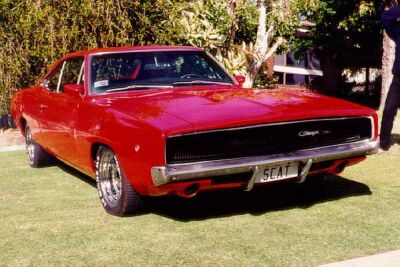
1968 was a massive year for the Charger, as it was redesigned from front to back. Some of the most important aesthetic changes included a new hidden headlight grille, coke-bottle body, recessed backlight, refined tail, and minimal use of chrome. This redesign resulted in a six-fold increase in sales from 1967. Out of the 92,590 Chargers produced for 1968, 17,665 had the R/T package with its standard 440 Magnum engine and “Scat Pack” bumblebee stripes on the rear end.
Only a scant 475 came with the all-mighty Hemi. The Hemi was strengthened and improved for the 1968 model year. The updated 426 HEMI came with a slightly longer-duration cam, new valve springs, and oil consumption-reducing measures. It was still under-rated at 425bhp and still remained the engine of choice for serious drag racers.
1968 Dodge Charger Engine Options
| Model Year | Engine | Horsepower | Torque |
| 1968 | 318 cid V8 | 230 horsepower | 340 lb-ft |
| 1968 | 383 cid V8 (4 bbl) | 325 horsepower | 425 lb-ft |
| 1968 | 426 cid HEMI V8 (4 bbl) | 425 horsepower | 490 lb-ft |
| 1968 | 440 cid V8 (4 bbl) | 375 horsepower | 480 lb-ft |
Production: 17,665
Performance: 426 Hemi V8 425: 0-60 in 5.3 sec, 1/4 mile in 13.8 sec @ 105mph.
1969 Dodge Charger R/T
The 1969 Dodge Charger was almost entirely unchanged aesthetically from the 1968 model. The regular Charger model received two new engine options including a vastly underpowered 225 CID slant-six and an additional 2-barrel version of the 383 CID V8.
Dodge released two special versions of the Charger, in order to better compete in NASCAR. The first was the Charger 500, which was basically a 1968 Charger with improved aerodynamics. The Charger 500 had a flush-mounted Coronet grille with a flush-mounted rear window over the recessed backlight. Although the Charger 500 had some racing success, Dodge engineers felt they could do more.
They went back to the wind tunnel and came back with the Dodge Charger Daytona, the most outrageous muscle car of the era. In front, the Daytona sported a pointed 18-inch nose extension which reduced drag and enhanced downforce. If you are interested in learning more about the Charger Daytona, take a look at our dedicated article about it here.
1969 Dodge Charger Engine Options
| Model Year | Engine | Horsepower | Torque |
| 1969 | 225 cid Slant-6 | 145 horsepower | 215 lb-ft |
| 1969 | 383 cid V8 (2 bbl) | 290 horsepower | 390 lb-ft |
| 1969 | 383 cid V8 (4 bbl) | 325 horsepower | 425 lb-ft |
| 1969 | 426 cid HEMI V8 (4 bbl) | 425 horsepower | 490 lb-ft |
| 1969 | 440 cid V8 (4 bbl) | 375 horsepower | 480 lb-ft |
Production: 20,057
1970 Dodge Charger
For the last year of the second-gen Dodge Charger, the 1970 model saw another redesign which now had a new chrome loop front bumper and a new full-width taillamp housing. R/T versions gained a simulated reverse body scoop.
Some new “high impact” color options were also added to the lineup, including Plum Crazy and Go-Mango. The shifter was also upgraded to a pistol-grip handle on top of the 727 TorqueFlite automatic and Hurst four-speed manual shifter. A new SE version was also added, with leather upholstery and an available electric sliding sunroof.
Performance buffs cheered at the addition of a new engine choice, the 440 Six Pack. Slotted between the 440 Magnum and the Hemi, the 440 Six Pack traded in the 440’s 4-barrel carburetor for 3 Holley two barrels, increasing the horsepower from 375 bhp to 390 bhp. The Hemi was also improved, with the addition of hydraulic lifters, instead of solid tappets. Still, rising insurance costs took their toll and only 10,337 R/Ts were sold in 1970. Of these, a mere 116 were 440 Six Packs and only 42 were Hemis.
1970 Dodge Charger Engine Options
| Model Year | Engine | Horsepower | Torque |
| 1970 | 225 cid Slant-6 | 145 horsepower | 215 lb-ft |
| 1970 | 383 cid V8 (2 bbl) | 290 horsepower | 390 lb-ft |
| 1970 | 383 cid V8 (4 bbl) | 325 horsepower | 425 lb-ft |
| 1970 | 440 cid V8 (4 bbl) | 375 horsepower | 480 lb-ft |
| 1970 | 440 cid V8 “Six Pack” (3×2 bbl) | 390 horsepower | 490 lb-ft |
| 1970 | 426 cid HEMI V8 (4 bbl) | 425 horsepower | 490 lb-ft |
Production: 10,337
Performance: 426 Hemi V8 425: 0-60 in 5.5 sec, 1/4 mile in 13.9 sec @ 105mph.
Third Generation Dodge Charger (1971-1974)
The third-generation Dodge Charger was a simultaneously successful, yet disappointing car for Chrysler. By 1971, gas prices and insurance costs began climbing, signaling a significant change to the muscle car landscape. While Chrysler attempted to weather the storm and continue producing beasts in 1971, increasing emissions regulations and waning customer demand led to the downfall of the peak Charger by 1972.
1971 Dodge Charger
1971 was another year for Charger redesign, and this one was comprehensive. While the Charger was still built on the Plymouth B-body chassis, it was reduced in length by 3 inches, with its wheelbase shortened by 2 inches. The third-gen Charger also introduced a new split-grille facade, functional rear spoiler, and optional “Ramcharger” hood. It now shared its body with the Dodge Super Bee and was still available in R/T and SE trim.
The R/T version was particularly bold with its standard blackout hood, simulated bodyside air extractors, Rallye wheels, tape stripes, and optional front and rear spoilers. It was also the first year that the Coronet and Charger lines were merged, with the 2-door variants considered Chargers while 4-door variants were considered Coronets. It was also the only year that a Dodge Charger Super Bee was offered.
There were also some changes made to the third-gen engine lineup as well. While other manufacturers were decreasing their engine ratings, Chrysler held on as long as it could. The Hemi retained its 425bhp rating while the 440 lost 5bhp to 370bhp and the 440 Six Pack lost 5bhp to 385bhp. The Hemi breathed through an Air Grabber-type hood scoop activated by a dashboard switch. A full range of bold colors was available from “Green Go” to “Citron Yella.” This body style would last until 1974, but the 1971 model year would prove to be the last year for the 426 Hemi. The 440 “Six Pack” was also eliminated from the lineup after 1971.
1971 Dodge Charger Engine Options
| Model Year | Engine | Horsepower | Torque |
| 1971 | 225 cid Slant-6 | 145 horsepower | 185 lb-ft |
| 1971 | 318 cid V8 | 230 horsepower | 240 lb-ft |
| 1971 | 340 cid V8 | 275 horsepower | 340 lb-ft |
| 1971 | 383 cid V8 (2 bbl) | 275 horsepower | 375 lb-ft |
| 1971 | 383 cid V8 (4 bbl) | 300 horsepower | 410 lb-ft |
| 1970 | 440 cid V8 (4 bbl) | 370 horsepower | 480 lb-ft |
| 1970 | 440 cid V8 “Six Pack” (3×2 bbl) | 385 horsepower | 490 lb-ft |
| 1970 | 426 cid HEMI V8 (4 bbl) | 425 horsepower | 490 lb-ft |
Performance: 426 Hemi V8 425: 0-60 in 5.8 sec, 1/4 mile in 13.7 sec @ 104mph.
1972 Dodge Charger
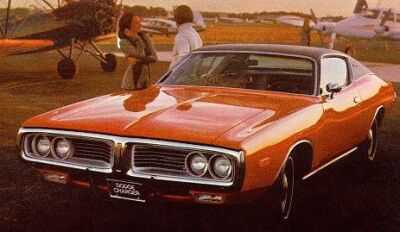
If 1971 marked the beginning of the end for the glory days of the Charger, 1972 was another nail in the coffin. Starting in 1972, Chrysler had to detune its engines to meet ever stricter emissions laws. In a comprehensive change to how engine horsepower was rated, all American car companies were forced to quote engine ratings in terms of net output (engine output with all accessories), rather than gross output. This lead to some dramatic “declines” in rated engine power.
With the Hemi gone, the 440 Six Pack became the top engine choice. There is some speculation that the 440 “Six Pack” never made it into 1972 Charger models, while other reports claim that only 6 were ordered. Its output dropped from 385bhp gross to 330bhp net. The regular 4 bbl 440 dropped from 370bhp gross to 280bhp net. The 383 was unable to meet the new emissions requirements and was dropped. A new 400 V8 which offered 255bhp net took its place. The Charger “Rallye” took the place of the R/T in 1972, becoming the top model over the SE.
1972 Dodge Charger Engine Options
| Model Year | Engine | Horsepower | Torque |
| 1972 | 225 cid Slant-6 | 110 horsepower | 180 lb-ft |
| 1972 | 318 cid V8 | 150 horsepower | 260 lb-ft |
| 1972 | 340 cid V8 | 240 horsepower | 290 lb-ft |
| 1972 | 400 cid V8 (2 bbl) | 255 horsepower | 340 lb-ft |
| 1972 | 440 cid V8 (4 bbl) | 280 horsepower | 375 lb-ft |
| 1970 | 440 cid V8 “Six Pack” (3×2 bbl) | 310 horsepower | ? |
1973 Dodge Charger
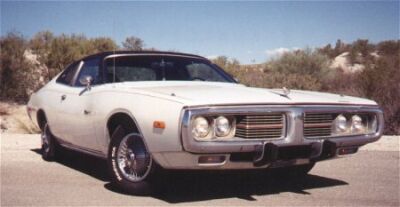
The 1973 Dodge Charger sported a new look, including some front and rear cosmetic changes and enlarged rear quarter windows. The 1973 model was also slightly taller and wider than the previous year’s model. The optional Rallye package added loud side stripes, a pinned-down hood with power bulge, anti-sway bars front and rear, fat tires with raised white lettering, and special instrumentation. It was also the only model to receive the 340 cid V8.
1973 Dodge Charger Engine Options
| Model Year | Engine | Horsepower | Torque |
| 1973 | 225 cid Slant-6 | 110 horsepower | 180 lb-ft |
| 1973 | 318 cid V8 | 150 horsepower | 260 lb-ft |
| 1973 | 340 cid V8 | 240 horsepower | 290 lb-ft |
| 1973 | 400 cid V8 (2 bbl) | 170 horsepower | 305 lb-ft |
| 1973 | 400 cid V8 (2 bbl) | 260 horsepower | 335 lb-ft |
| 1973 | 440 cid V8 (4 bbl) | 275 horsepower | 380 lb-ft |
Performance: 440/280: 0-60 in 7.4 sec, 1/4 mile in low 15s.
1974 Dodge Charger

The 1974 Charger continued on with a 275bhp 440 as its top engine choice. This would be the last year that the Charger would be considered a performance vehicle as the 1975 Chargers would be repositioned in the personal luxury sector. Although the Charger name would grace several future Chysler models, none would ever match those of the muscle car era.
1974 Dodge Charger Engine Options
| Model Year | Engine | Horsepower | Torque |
| 1973 | 225 cid Slant-6 | 110 horsepower | 180 lb-ft |
| 1973 | 318 cid V8 | 150 horsepower | 260 lb-ft |
| 1973 | 360 cid V8 (4 bbl) | 245 horsepower | 320 lb-ft |
| 1973 | 400 cid V8 (2 bbl) | 170 horsepower | 305 lb-ft |
| 1973 | 400 cid V8 (2 bbl) | 260 horsepower | 335 lb-ft |
| 1973 | 440 cid V8 (4 bbl) | 275 horsepower | 380 lb-ft |

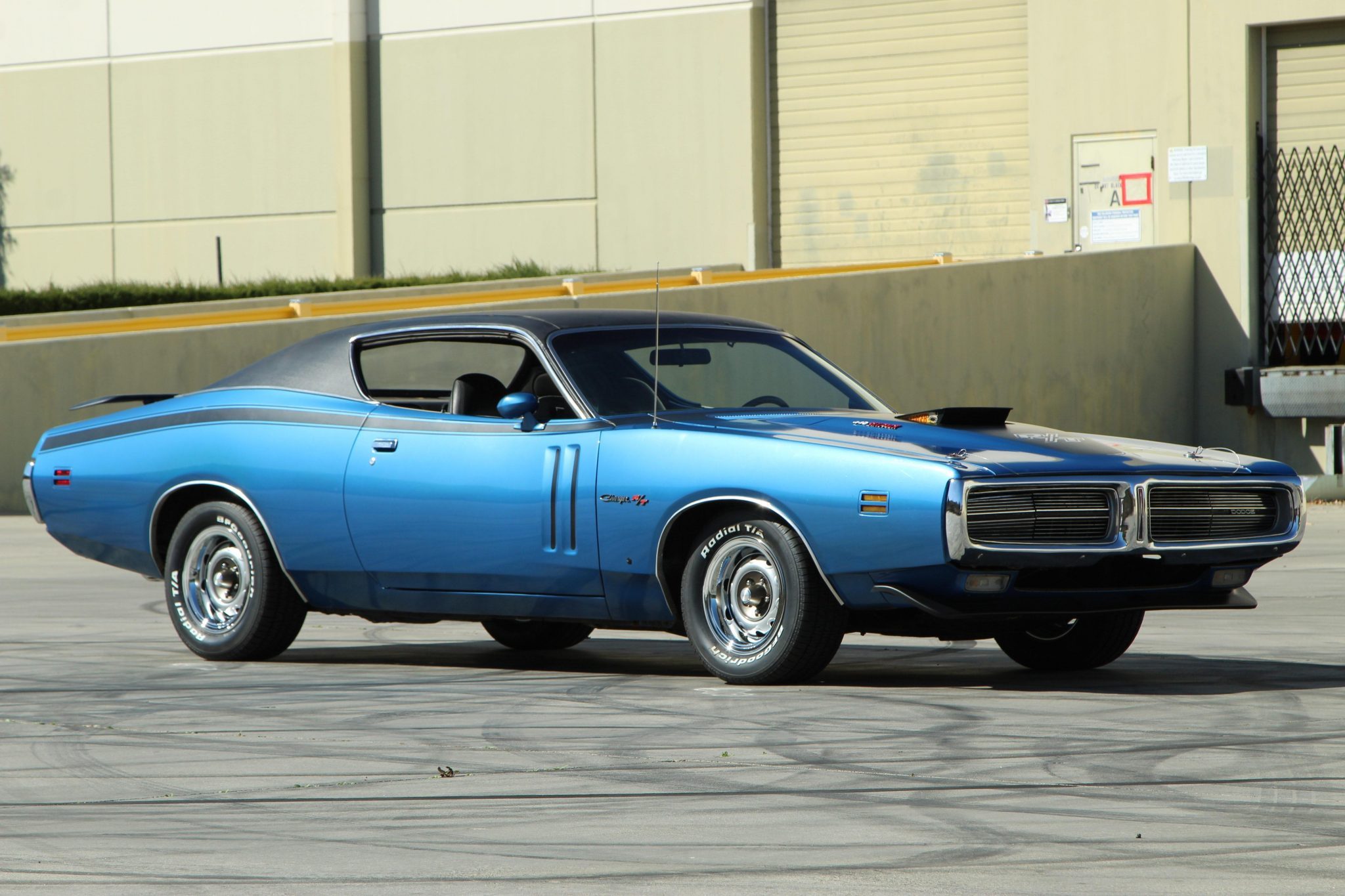
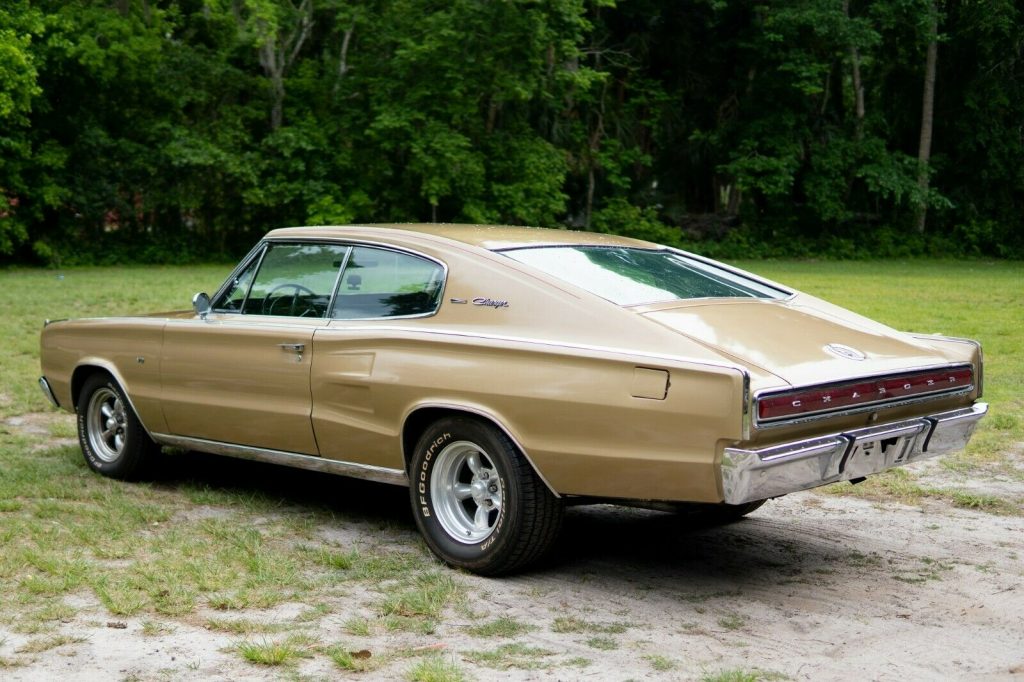
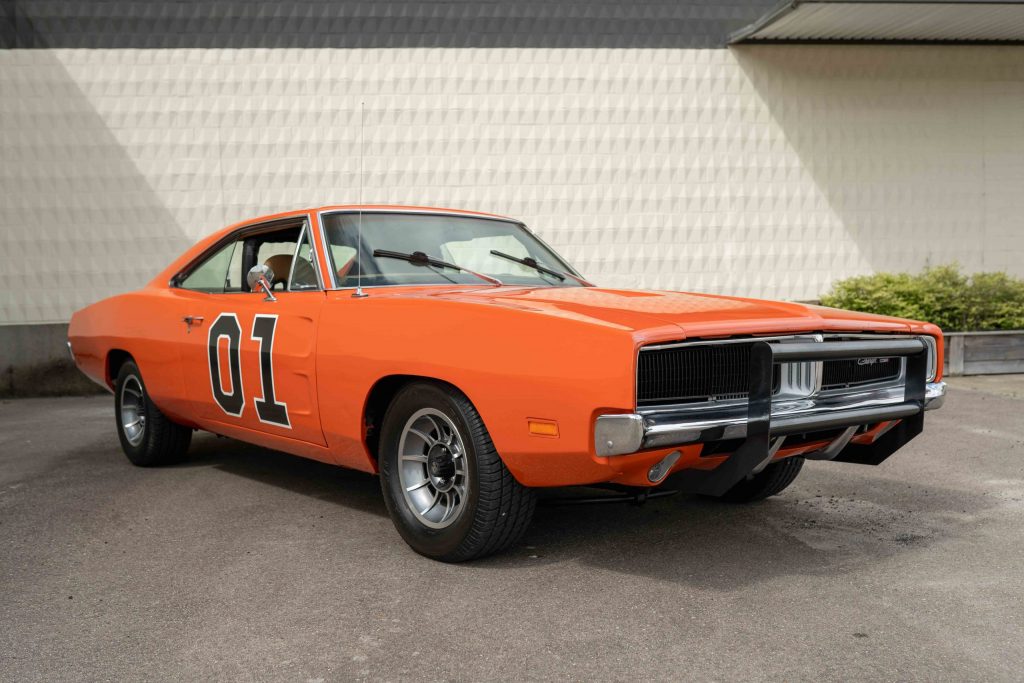
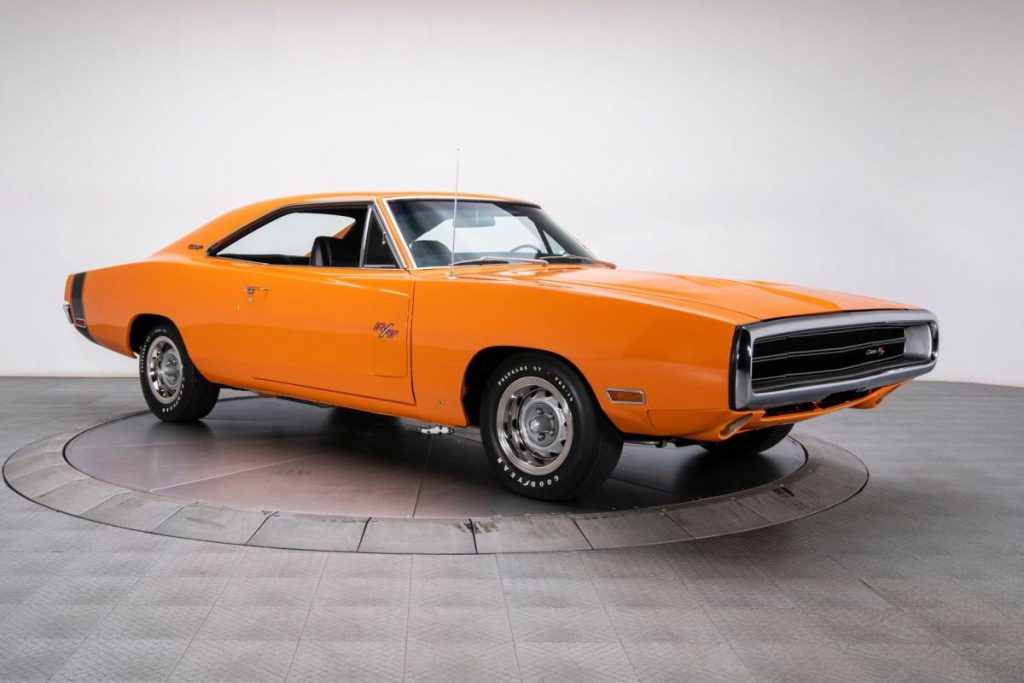
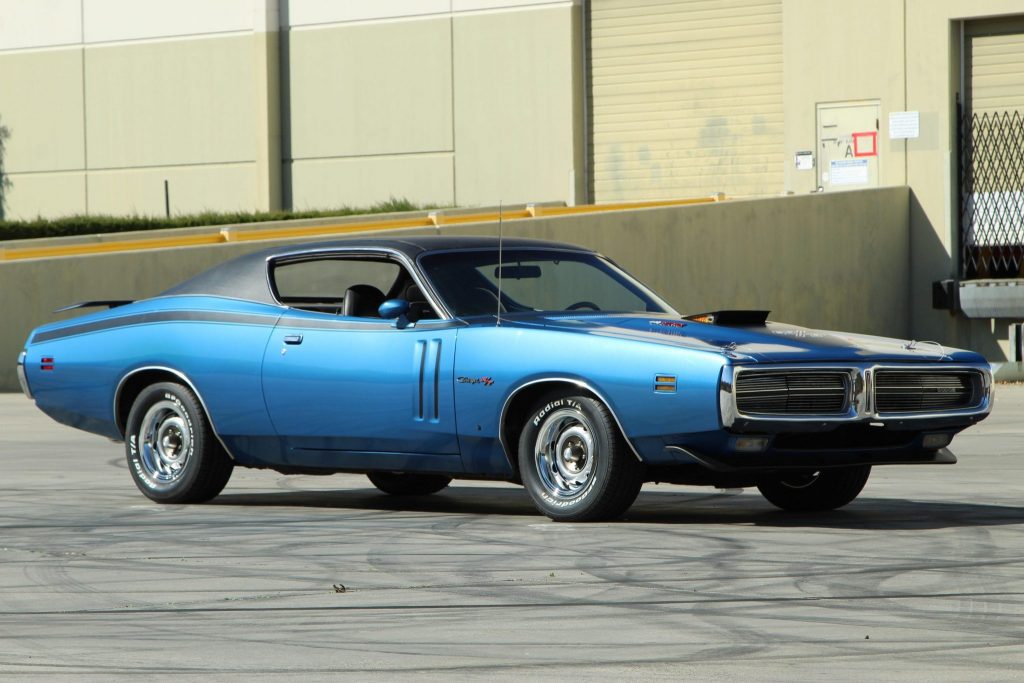
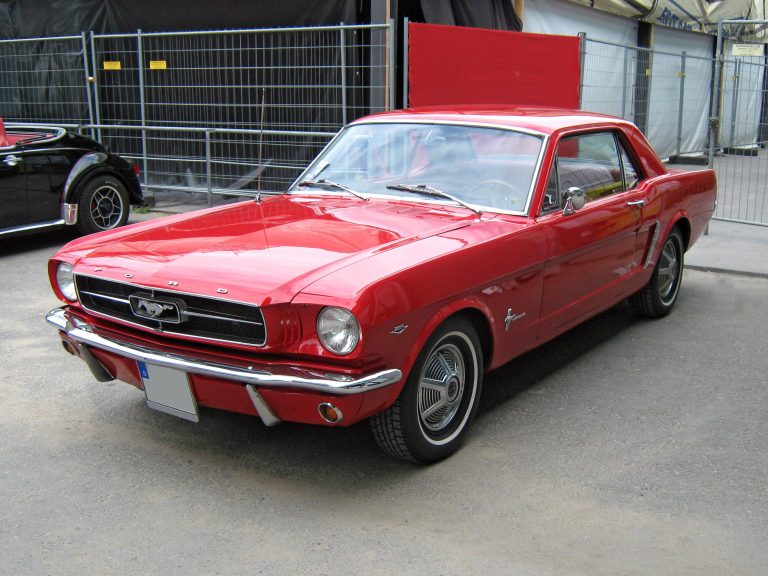
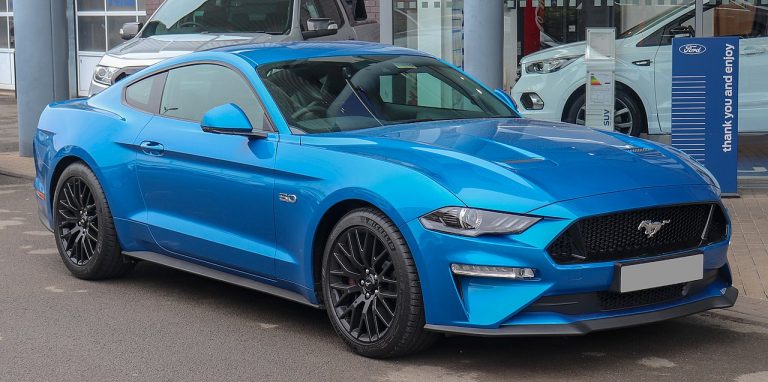
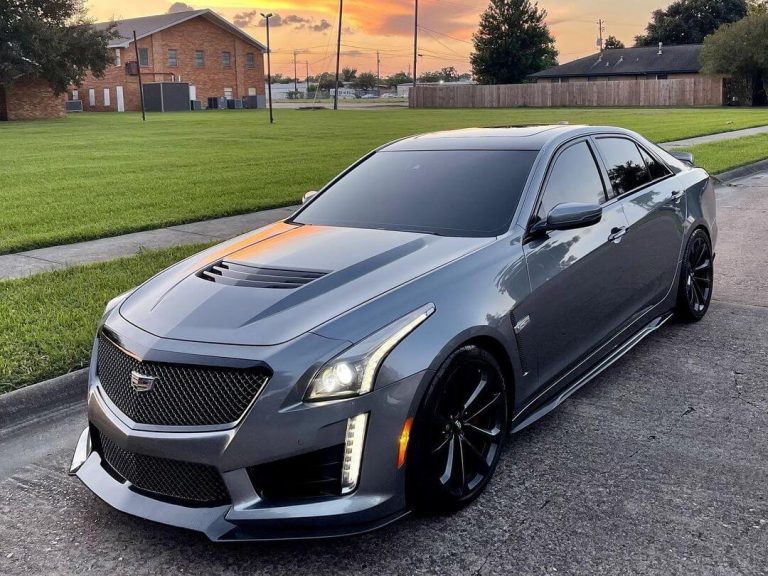

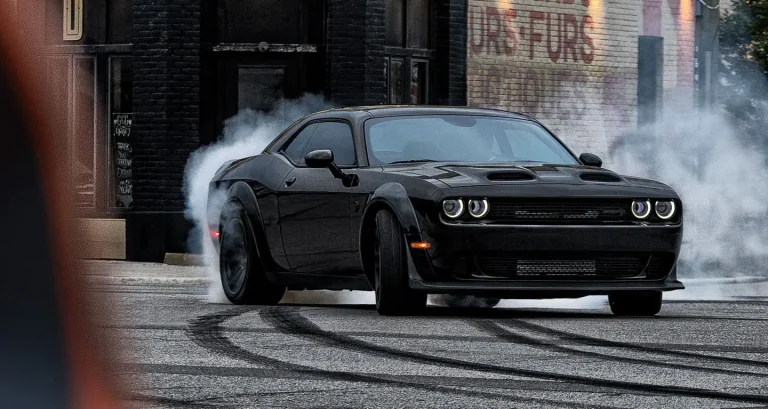
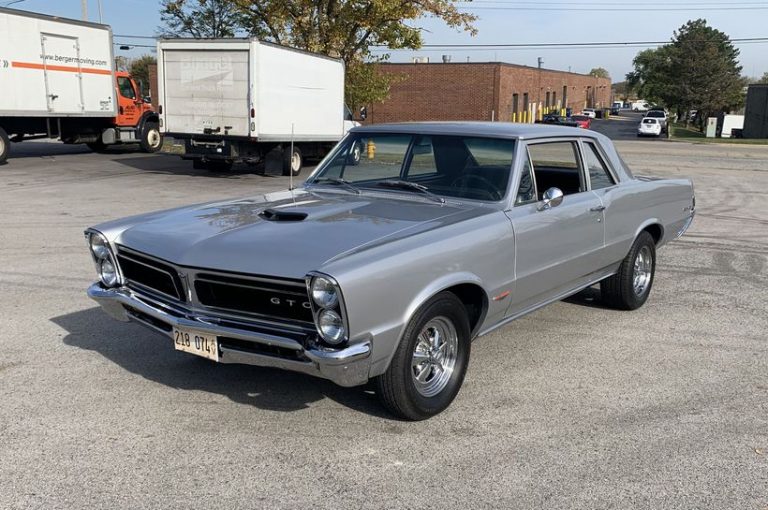
The 1972 engines were not just because they went from gross to net…
All Chrysler V8’s had lower compression,thus less power than 71 versions..
All Chrysler V8 also had weaker camshafts thus less power,weaker crank and heads were changed,along with the carburetor..All that alone was over 125 hp to be very conservative meaning they lost more than 150 hp from 1971 versions more so the 440,426,383,340 as the 340 was always under rated like the others…318 lost lots of punch too not 125 hp but at least 75 hp from the 71 and older..if you had one you would know.
Example,my stock 1969 383 2barrel Charger yes TWO BARREL,single exhaust,3.23 gear was the same side by side my 1972 Dodge Charger Rallye 440 4 barrel…Both were bone stock and ran perfect,any weight gain from the 72 was gone as I am 210 lbs and my buddy was 270 lbs and we raced my Dad in the 72 Charger(he was a drag racer)..Both cars ran 14’s in the 1/4 yes a 383 2barrel 69 charger bone stock did as it hooked and went…Road Test of a 68 Charger with a 318 YES a 318 ran 15.90’s and mid to high 7’s 0-60 from a 318! Remember all road tests even ones you posted were not tested the same as today,tracks if used had no prep…Basically racing on a wal mart parking lot and soem 0-60 and 1/4 mile tests were done in the rain or on dirt! Not very accurate..Slicks of the day were a joke as they were less sticky and narrower than a 225/60 series mini van tire!
Engines lost power in 72 not by just going from gross to net..
Chrysler in 1972 redid their engines..
Lower Compression,different crank,weaker camshaft,heads changed and carb changed all reduced power by 100 at the minimum for performance engines..
Old road tests were bogus as cars never hooked! They spun and tracks were all no prep as they didnt have prep like today..Tracks looked like a wal mart parking lot! and hooked like one or the lack of hooking!
Example..I had a bone stock 1969 Chrysler Newport with a 383 2barrel,3.23 gears and another 1972 Chrysler with a 440 4bbl and 3.23 gears these were 12 year old and 15 year old low mileage like new cars..Full paperwork,and always serviced..I bought them both at an estate sale..The 69 was a Newport 2 door hardtop,electric windows,a/c the 72 was a New Yorker 2 door triple black beauty…The New Yorker was only 170lbs heavier as I had them weighed at a scale..The 69 was door to door in a race with the 72!! I had a 1969 300 2 door with a 440 non TNT just the 350 hp version and it crapped all over the 72 by several cars in a race! So it was NOT just net rating that lowered power,if you drove them,you knew..I bought many c bodies then as they beat other muscle cars and you could get cars that looked and drove like new and were reliable and not messed with..Yes,I found my dream 68 Charger RT that I still have but nonetheless it took 4 years of buying and selling other Charger’s and Mopar cars/trucks.
I also had a 73 340 Duster that was slow compared to my Uncles 70 Duster 340 both stock..both 3.55 gear and 904 automatics! My 73 I put a purple cam and it still was a tick behind the stock 70! I also had 2 other 73 340 Dart Sports,Duster and a Cuda the lower compression 340’s not like the 71 and older versions,nor any engine..Even the 318 suffered a loss.